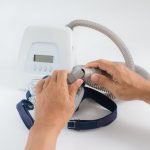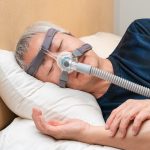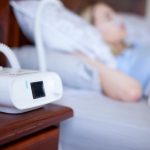Surgical Management of Obstructive Sleep Apnea (OSA)
Posted by Dr. Richard Gall

Medical management of adults with OSA should always be at the forefront of treatment options. This includes CPAP, the use of which results in the highest rate of resolution of apneic episodes and thus improvement of OSA symptoms. However, some patients find the use of CPAP difficult to get used to for a variety of reasons. As well, long term compliance if often difficult to ensure.
When medical management of OSA fails patients are often left with the option of surgical management for OSA. The surgeries have evolved over time and degree of success varies depending on the procedure being done, the surgeon performing the operation, the severity of one’s sleep apnea and each patients’ unique anatomy.
Surgical procedures can be broken down from less invasive to more invasive. Most procedures are done by either Otolaryngology-Head and Neck Surgery physicians (ENT) or Oral Surgeons. Many nose and mouth procedures have been described and used over time. Septoplasty, one of the most common procedures performed by general Otolaryngologists is surgery to correct a deviated nasal septum. However, in this surgeons’ experience as well as in historical literature, this procedure rarely has any effect on OSA. It can however, by reducing nasal obstruction, lead to improved compliance and utilization of CPAP machines, thus improving overall OSA health. There are also office procedures that can be effective when medical management has failed. The Pillar procedure involves implanting 3 to 5 polyester rods into the soft palate near the junction of the hard and soft palate. These rods induce an inflammatory response which serves to stiffen the soft palate which can lead to improvement of OSA symptoms. This procedure is typically done under local anaesthesia and is reserved for those patients with mild OSA.
Uvulopalatopharyngoplasty (UPPP) is a more invasive procedure that is commonly performed. It involves removal of a portion of the uvula, a small portion of the soft palate, which is often redundant in OSA patients, as well as removal of the tonsils, if still present. While the UPPP procedure typically involves surgically cutting out the redundant tissue, there are other techniques in use for reducing the size of the redundant tissue such as radiofrequency ablation and coblation procedures.
The procedures listed above, which is not meant to be an exhaustive list of all procedures available, typically address what is termed the upper airway. The next group of procedures, while less common but more invasive, tend to address the anatomical area below the mouth cavity and more commonly will address the tongue base area. The tongue base is an important anatomical location for tissue collapse during sleep leading to OSA.
Hyoid bone advancement, tongue base advancement and mandible (the lower jaw) advancement all try to address the tongue base. By mobilizing the tissue of the tongue base forwards improvements in OSA may be realized.
Finally, the last resort for severe OSA patients is tracheotomy. This involves creating a window through the skin and muscle of the neck into the trachea itself. This permanent tracheal opening allows for the total bypass of the collapsing tissue of the tongue base and higher structures thus relieving the obstruction of the airway which resolves the obstructive sleep apnea episodes. While this procedure is quite drastic, it can be a lifesaving procedure for certain individuals and can be reversed in the future should it no longer be necessary.
Success rates vary by procedure and surgeon with many procedures observing a decrease in continued success rates over time.
The procedures mentioned above along with the brief description can only be recommended in the context of a full patient history and physical exam. Consultation with your family physician and a subsequent referral to a qualified Otolaryngology-Head and Neck Surgery physician is recommended. Discussions on surgical success rates, risks, benefits, and complications should always precede any surgical intervention. Prior to embarking on any surgical procedure, patients must have a sleep study performed by an accredited facility in order to assess the severity of an individual’s OSA.












